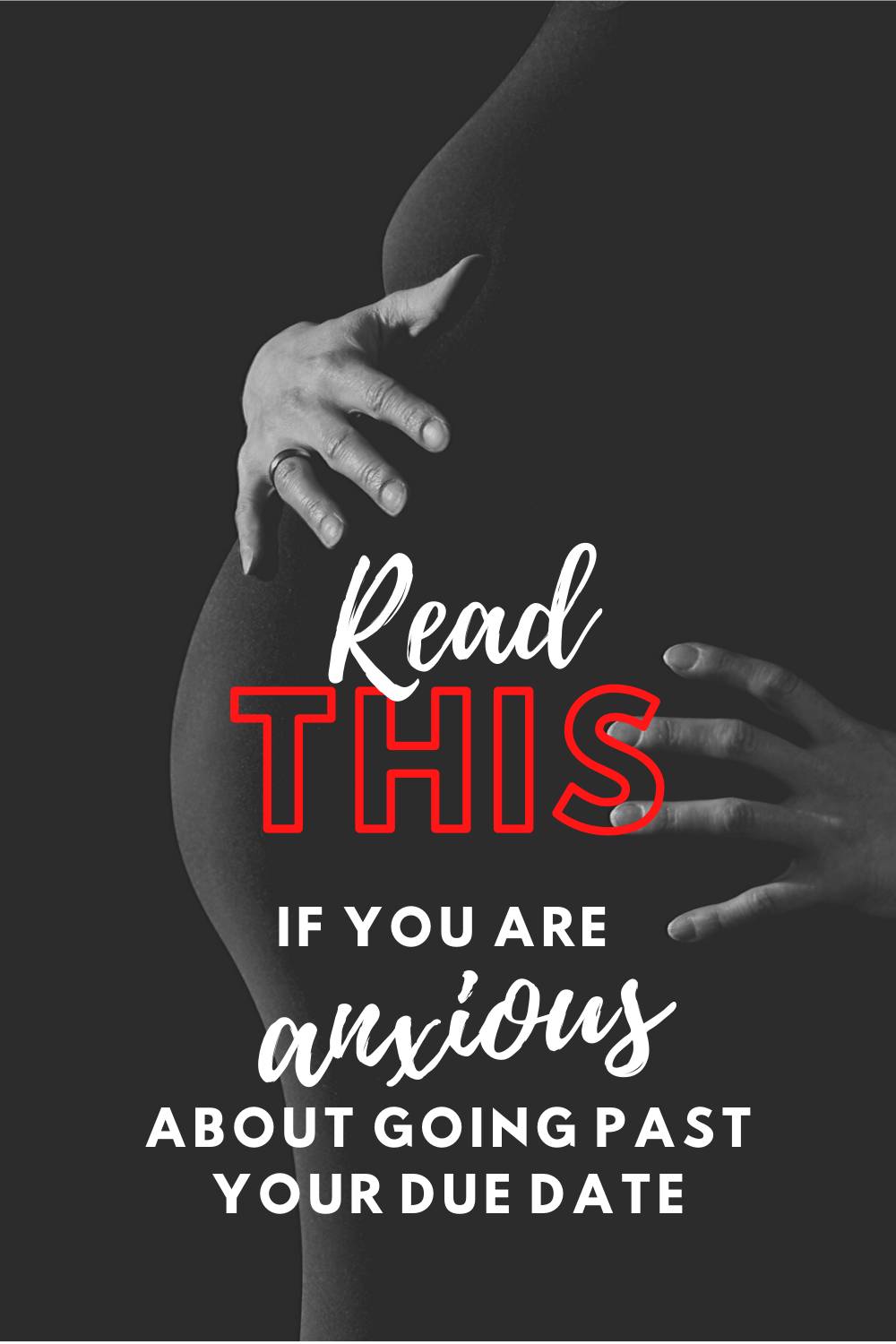How To Take Your Own Newborn Photos (In A Pinch)
COVID19 has rearranged our lives in many ways. It has thrown a kink into our plans every step of the way. Folks are having to make changes to their birth plans, their postpartum plans, and their daily routines. Not only are we being forced to be mindful of spreading disease, many of us are also being forced to rethink our budgets and spend wisely due to unforeseen financial constraints.
Jennifer Hamilton of Mamarazzi Photography and I wanted to be sure you had the information necessary in order to capture those first moments with your baby at home. It’s understandable that you may not wish to leave the home with your newborn with fears and uncertainty over COVID19. That doesn’t mean those first details and memories can’t be captured in an aesthetically pleasing way!
Here are some basic tips, tricks, and safety precautions to keep in mind when taking your own newborn photos at home:
This post contains affiliate links. I only link to products that I have personally used and feel comfortable recommending. If you use these links, it does not increase the cost for you. It does help support this blog and my family, which allows me to bring you more helpful content. I really appreciate it when you use these links to purchase these products!
COVID19 has rearranged our lives in many ways. It has thrown a kink into our plans every step of the way. Folks are having to make changes to their birth plans, their postpartum plans, and their daily routines. Not only are we being forced to be mindful of spreading disease, many of us are also being forced to rethink our budgets and spend wisely due to unforeseen financial constraints.
Jennifer Hamilton of Mamarazzi Photography and I wanted to be sure you had the information necessary in order to capture those first moments with your baby at home. It’s understandable that you may not wish to leave the home with your newborn with fears and uncertainty over COVID19. That doesn’t mean those first details and memories can’t be captured in an aesthetically pleasing way!
Here are some basic tips, tricks, and safety precautions to keep in mind when taking your own newborn photos at home:
1. Equipment
What do you have available? Phone with a good camera? Great. There are also lenses available for mobile phones that enhance your phone camera if you have time to plan and want to get fancy. This set of lenses available on amazon works with a variety of phones and includes a fish eye lens, a wide angle lens, and a macro lens. The wide angle is great for portraits and taking photos in smaller rooms/spaces, and the macro lens would be excellent for details such as eyelashes, toes, fingers, lips, etc. If you do have a DSLR camera, I recommend using it in manual mode. Look up the exposure triangle if you’re not accustomed to shooting in manual. Spend a little time practicing, because practice makes perfect. Whether you are shooting on a mobile phone or shooting with your DSLR, it’s a good idea to shoot RAW files if you plan to edit them. Once edited, then you export as jpg. RAW gives you more editing capabilities because it saves more data within the photo. To shoot RAW with your mobile phone, there are a few options. Some phones allow you to shoot in raw format (it’s a camera setting). Most do not (iphones definitely don’t). You can get around this by downloading the Lightroom App and using the camera IN THE APP. Then you can edit the photo in the app as well. Once edited, you can choose the “save to camera roll” option and voila! Your edited photo is available for you to print/store however you wish.
2. Props/Clothing
When it comes to props and clothing, you want to keep it simple. Neutral colors are best. Creams, whites, greys. It’s a good idea to steer clear of patterns and bright colors. Jewel tones and earth tones are also lovely. Having some extra large swaddles on hand is good. I like the jersey knit cotton ones (like these) and the large bamboo muslin ones (like these). If you have a large, flat(ish) basket (like those large wicker bowls) or a very large wooden kitchen bowl centerpiece (NO GLASS), you can use that to layer underneath a blanket and set your swaddled baby gently atop (as long as it is steady and even — use your judgement and be safe). Although colors should be earthy tones and patterns are a no-go, adding multiple textures is a great idea to add interest. Think floor texture plus basket texture plus crocheted blanket layer texture plus swaddle texture. That’s a lot of interest! Or you can have baby on your bed with multiple textured blankets in complimentary layered underneath them in an eye-catching way. There are so many options!
3. Lighting
Most people do not have photography lighting available, and I definitely don’t expect you to go out and buy it! I personally do not take studio lighting to my photography sessions, and you don’t need it either. You can work with the natural light in your home. Set up your portrait near a window with indirect, soft light coming through. Think of the light on a cloudy, hazy day. The kind of light that is diffused through the clouds but still bright. That’s the perfect lighting. Harsh light is bright and golden and usually leaves very deep shadows. Harsh light can be artistic (think about those photos that have the shadows of the blinds in them) but soft light is best for capturing a newborn. To get soft lighting, you’ll need to observe the lighting in your home. Note what kind of lighting each window has at different times of the day, and plan your timing accordingly. Light can also be diffused by sheer curtains. It is best if the curtains are white or off-white, no crazy colors (since the colors can reflect onto the skin of you or your baby and cause issues with white balance in your photos). You can also bounce light off a simple white foam board in order to make shadows less harsh. Just place the foam board opposite the window to reflect the light and reduce the shadows.
Another thing to keep in mind as far as lighting is concerned is to NOT uplight your baby (or yourself). Uplighting is the least flattering light. It means you are placing the light source BELOW you or your baby’s head, which can give a very haunted effect. The light source should come from the direction that the baby’s head is facing. The light should illuminate the baby’s face downward, from the top of the head to the chin.
4. Posing
Posing is another thing that you’ll want to keep relatively simple. Warning: Do NOT attempt the complex poses that you see in portraits that have been taken by a professional newborn photographer in a studio. What many people do not realize is that professional photographers have hired assistants who help them pose and hold the newborns safely. Many of the photos you see are actually “composites” — meaning the newborn has been held in the poses by multiple people (the parents, the assistants) and then the arms/hands have been edited out. Examples of this include the froggy pose, the potato sack pose, and basically any pose where the baby is holding their head up or sitting up on their bottom. Babies do not sit up by themselves. You can not wrap them up in a swaddle and prop them up— it is dangerous. They must be laying down on a steady surface or lying in their parents’ arms to be safe.
That being said, there are many poses you CAN do. You will be working toward capturing more of a “newborn lifestyle” aesthetic. Take photos of your baby in your arms, at your breast, laying down on your bed, swaddled on your bed… You can swaddle your baby and then place them on top of another textured blanket that is layered on top of a very flat woven bowl or a flat, large wooden bowl. I have saved some ideas on this pinterest board. I was careful to add photos that can be recreated safely. Always be gentle with your baby. If they seem fussy or uncomfortable in a position, do NOT continue to force them into that position. It is important to keep the poses simple and natural if you are not trained professionally, because you can seriously injure your baby or even block their airways by putting them in unnatural poses without professional assistance.
Remember to capture the details! Their tiny toes, tiny nose, tiny fingers, hands, feet, ears, hair, etc. Put something else in the frame to show the scale (such as you or your partner’s hand underneath their hand or foot). Also, get in the photo! Take turns behind the camera or get a tripod (like this one for mobile phones that comes with a bluetooth remote) and get in front of that camera with your babe! These photos are for them too, and they’ll want to see their loving parent(s) in the photos.
Here are some examples of DANGEROUS positions to try to put your baby in at home:
(All of these are captured and edited by Jennifer Hamilton of J. Mamarazzi Photography)
5. Take It Slow
Remember that you have time. When you hire a professional, either to come to your home or in a studio, we have time constraints. We have to capture everything within a couple of hours, but YOU don’t. You can take all the time you need. No pressure to get the photos within an hour or even a day. Only work when you and your baby are both happy. For baby, usually that means they are milk drunk and sleeping. Take a few minutes each day to set up a short photo session and capture some special moments.
6. Editing
Okay, so I’m not going to go into all the details about how to professionally edit photos. It takes years to perfect techniques and hundreds of dollars worth of equipment and software. But you do have some inexpensive options for polishing up your photos a bit! Remember that Adobe Lightroom app I was talking about earlier? Well, if you have it downloaded, you can use it to edit your photos! It has a TON of options for editing, but the main things to focus on are white balance, highlights/shadows, exposure, and whites/blacks. You can also purchase lightroom mobile presets. Etsy is full of them, just search “lightroom mobile presets.” They are relatively inexpensive (usually around $10 per set). Then you follow the instructions to save them to your phone and use them in the Lightroom app. Presets aren’t usually “One-click wonders,” so you’ll still have to play around with some basic edits, but they can be a great starting off point for anyone without much experience in editing.
Those are my basic tips, tricks, and safety precautions for taking your own newborn photos.
You can watch the replay of The live Jennifer and I did here:
Do you have any questions or concerns? Feel free to ask them in the comments!
You Need To Read This If Your Baby is "Past Due"
Did you know that there is no such thing as a “due date”?
Babies aren’t due like library books are due! There is no late fee. Babies do not abide by schedules.
EDD stands for “Estimated Day of Delivery.” It is an estimation. Not an expectation.
When I was pregnant with my first son, Titus, I felt so anxious when my EDD came and passed. If you do a quick google search asking when most babies are born, it’ll tell you between 38-40 weeks. What isn’t clear is that those statistics are skewed by inductions and cesareans. If we wait until our bodies and babies are actually ready, the statistics would likely be a lot different. I didn’t know this at the time, so when 40 weeks came and passed, I started getting worried. I planned on a homebirth with a midwife, and I started to worry that she would transfer me to the hospital for an induction if my baby didn’t arrive “on time.”
I knew I didn’t want to birth in the hospital. I knew I wanted to avoid the cascade of interventions that can be triggered by an induction. Instinctually, I knew what my body and my baby needed… but the closer to 42 weeks I got, the more anxious I was that I would meet resistance from my care providers if I wanted to stick to my original plan (wait for labor to begin spontaneously and birth from home). That’s when I started to look for truly unbiased information about the REAL risks (and benefits) of waiting on my labor to begin on its own (even if that meant going into labor well into my 42nd week of pregnancy).
If you are nearing your “due date” (or, more accurately, your EDD), I highly recommend reading the two articles I have linked below:
Did you know that there is no such thing as a “due date”?
Babies aren’t due like library books are due! There is no late fee. Babies do not abide by schedules.
EDD stands for “Estimated Day of Delivery.” It is an estimation. Not an expectation.
When I was pregnant with my first son, Titus, I felt so anxious when my EDD came and passed. If you do a quick google search asking when most babies are born, it’ll tell you between 38-40 weeks. What isn’t clear is that those statistics are skewed by inductions and cesareans. If we wait until our bodies and babies are actually ready, the statistics would likely be a lot different. I didn’t know this at the time, so when 40 weeks came and passed, I started getting worried. I planned on a homebirth with a midwife, and I started to worry that she would transfer me to the hospital for an induction if my baby didn’t arrive “on time.”
I knew I didn’t want to birth in the hospital. I knew I wanted to avoid the cascade of interventions that can be triggered by an induction. Instinctually, I knew what my body and my baby needed… but the closer to 42 weeks I got, the more anxious I was that I would meet resistance from my care providers if I wanted to stick to my original plan (wait for labor to begin spontaneously and birth from home). That’s when I started to look for truly unbiased information about the REAL risks (and benefits) of waiting on my labor to begin on its own (even if that meant going into labor well into my 42nd week of pregnancy).
If you are nearing your “due date” (or, more accurately, your EDD), I highly recommend reading the two articles I have linked below:
Evidence Based Birth: Evidence on Due Dates
This reference was actually released right AFTER Titus was born. It features a photo of an online friend of mine (stretch_birthwork on instagram) who I met in my due date group during my pregnancy with him. She was also pregnant for closer to 43 weeks! We bonded over that experience. It wasn’t her first baby, or her first time to go past her EDD, so she was so confident in herself that I gained confidence just from talking to her.
Although I did not have access to this resource during my experience going past 42 weeks, I LOVE to recommend it because it is SO thorough. It defines the terms “full term” and “post term.” It discusses the ways we calculate our Estimated Day of Delivery (mistakenly referred to as our “due date”) and how they are flawed and inaccurate by at least a week, and probably more than that. The most accurate way to calculate your EDD is to have an ultrasound between 11-14 weeks of pregnancy. “Due Dates” should never be changed based upon a third trimester ultrasound. Once you pass 20 weeks, ultrasounds become significantly less accurate in predicting the age/size of your baby.
This article is also wonderfully enlightening because it discusses the relative risk versus the absolute risk of going past 42 weeks. Providers tend to pose the statistic as “the risk of stillbirth doubles after 42 weeks of pregnancy,” when this is the relative risk. The absolute risk is the actual risk. So, at 41 weeks the absolute risk of stillbirth is .17% (or 1.7 per 1000 births) and at 42 weeks the absolute risk of stillbirth is .32% (3.2 per 1000 births). While the relative risk sounds frightening (“the risk of stillbirth is 94% higher at 42 weeks than 41 weeks”), the absolute risk is very low at .32%. I understand that when we are talking about our babies, we want to be extremely careful. But there are ways to check in on your baby to reduce risks that I will list at the end of this article.
“About half of all pregnant people will go into labor on their own by 40 weeks and 5 days (for first-time mothers) or 40 weeks and 3 days (for mothers who have given birth before). The other half will not.” If you’ve gone past 40 weeks, you are NOT alone. It is actually quite common. Nature has variations of normal. Babies are not all the same size. Embryos do not all implant at the same rate. Pregnancies do not all last the exact same amount of time.
A Timely Birth, by Midwife Gail Hart
This resource is the one that influenced my beliefs and decisions regarding the length of my gestation. I am so thankful that I stumbled upon this article after I had passed my “due date” with Titus. It gave me the confidence I needed to trust my body, trust the process, and advocate for myself when speaking to my care providers about my choices.
Hart makes the point that postdates, by themselves, are not associated with poor outcomes. Extreme postdates, and postdates in conjunction with fetal abnormalities do show an increased risk. Hart states that if growth restriction and fetal abnormalities are removed, there are no significant increases in risk until past 43 weeks. She asserts that the medical community overreacts to postdates, and that care providers should simply monitor postdate pregnancies carefully and induce only if problems arise, to avoid the risks of induction unless they are absolutely necessary. She posits this is the best way to reduce the astronomical induction rates in the US (more than a third of women were induced in 1999, and another third had labors augmented with pitocin; in 2013, 41% of mothers reported that their care providers induced labor, and the majority of them were induced for going past their EDD).
I am not an obstetrician or licensed midwife… and more importantly, I am not YOUR care provider. Only you can know what is best for you and your baby. I am just here to remind you that YOU are in charge of your healthcare, and you know your body best. You are the one counting kicks every day. You are the one physically and perhaps even psychically connected to your baby. It is good to be armed with knowledge when making educated, informed decisions about your health care. There are risks in everything we do, and it is up to each of us as individuals to weigh the risks vs. benefits in every situation to make the best choice we can in each given moment. Do the research, consult your care provider, and follow your instincts. These are the resources that helped me make my decision, and I hope you will also find them enlightening. I chose not to induce based on what I read in these articles, but everyone will have a different perspective. Depending on your situation, you may decide induction is your best option after reading these articles. Everyone is different, and that’s okay. It’s important to honor that, and make decisions based on your specific situation.
If you are worried about going past your EDD but you would like to allow your body time to go into labor on its own, there are a few things you can do to check in on the health of your baby:
Count Kicks! Keep track of your baby’s movements throughout your pregnancy and if you notice a decline at any time, contact your care provider.
Visit a care provider who will monitor your fundal height, or do so yourself.
Check in on baby with a late ultrasound or non-stress test. Be aware, though, that ultrasound technology comes with its own risks AND can provide inaccurate scares about “low fluid” and “big babies” and even “meconium in the fluid” when none of those things are actually present.
If you are worried about going past your due date, I recommend starting a self care regimen that helps condition your mind & body to go into labor on its own. You can find my recommendations here: The Truth About “Naturally” Inducing Labor.
Did you go past your estimated day of delivery? Tell me about your experience in the comments!
How To Prepare A Nettle Infusion To Maximize Benefits During Pregnancy and Postpartum
Nettles are magical. Nettles are marvelous. Nettles are a MUST HAVE herbal support during pregnancy and postpartum. Not just that… nettles can provide healthy nutrients for the whole family! Nettles are packed with minerals, vitamins, and phytonutrients like chlorophyll and carotenoids. Over 100 nutritious chemical components have been identified in nettle. Nutrients like: Iron, calcium, potassium, phosphorus, manganese, magnesium, vitamin A, vitamin C, vitamin K, B vitamins, and more.
Forget the trendy green drinks, reach for a nettle infusion instead! Nettles are widely used and celebrated in the herbal community. They are cited as remedies for everything from seasonal allergies to postpartum anxiety. Not only are they a marvelous, magical tonic during pregnancy and postpartum, nettle infusions are a healthy herbal supplement for everyone. Nettles are antioxidants that relieve allergies, decrease inflammation, fight off infections due to their antiviral/antibacterial/antifungal properties, lower blood sugar, lower blood pressure, lower cholesterol, heal the mucosal lining of the stomach, support prostate health, and more. They are also a great food-derived supplement for the kiddos.
I especially love to recommend nettles as herbal support during pregnancy and postpartum because:
This post contains affiliate links. I only link to products that I have personally used and feel comfortable recommending. If you use these links, it does not increase the cost for you. It does help support this blog and my family, which allows me to bring you more helpful content. I really appreciate it when you use these links to purchase these products!
Nettles are magical. Nettles are marvelous. Nettles are a MUST HAVE herbal support during pregnancy and postpartum. Not just that… nettles can provide healthy nutrients for the whole family! Nettles are packed with minerals, vitamins, and phytonutrients like chlorophyll and carotenoids. Over 100 nutritious chemical components have been identified in nettle. Nutrients like: Iron, calcium, potassium, phosphorus, manganese, magnesium, vitamin A, vitamin C, vitamin K, B vitamins, and more.
Forget the trendy green drinks, reach for a nettle infusion instead! Nettles are widely used and celebrated in the herbal community. They are cited as remedies for everything from seasonal allergies to postpartum anxiety. Not only are they a marvelous, magical tonic during pregnancy and postpartum, nettle infusions are a healthy herbal supplement for everyone. Nettles are antioxidants that relieve allergies, decrease inflammation, fight off infections due to their antiviral/antibacterial/antifungal properties, lower blood sugar, lower blood pressure, lower cholesterol, heal the mucosal lining of the stomach, support prostate health, and more. They are also a great food-derived supplement for the kiddos.
I especially love to recommend nettles as herbal support during pregnancy and postpartum because:
Nettle infusions are a great source of supplemental iron.
They aid the kidneys, which is especially important during pregnancy when your body adds 50% to its usual blood volume, which your kidneys are in charge of cleansing. Nettle infusions can help reduce the risk of kidney stones.
They ease leg cramps and other spasms.
They strengthen arterial elasticity and reduce hypertension, which can reduce the risk and severity of complications such as preeclampsia (later in pregnancy).
They are a good food-based source of calcium. Not only is this great during pregnancy when your body is using its calcium stores to grow your baby— it can also help reduce pain during labor by supporting the muscles of the uterus so they can work strongly and efficiently.
Nettles contain hemoglobin and vitamin k, which can help reduce your risk of hemorrhage.
The mildly astringent properties of nettles can help reduce and heal hemorrhoids.
They support your body’s breastmilk production, helping you create plenty of rich, nutritious milk for your baby.
Supports healthy hair growth and limits hair loss postpartum.
So how do you make a nettle infusion?
You’ll need:
1 ounce of dried nettles (approximately 3/4 cup)
4 cups of boiling water (the size of a quart mason jar, or a french press)
I personally like to make my nettle infusion in the french press. It makes it easy to press the dried herbs down once the infusion is done steeping.
Place the dried nettles in the container you are using (mason jar or french press). Boil the 4 cups of water, then pour over the dried herbs. Let the herbs infuse for at least 4 hours or overnight. In our family, we simply wait 4 hours. Then my husband and I drink about 1.5 cups each and the kids drink about .5 cup each, all poured over ice. Trust me, it tastes FAR better over ice. It definitely has a “green” taste to it. While the flavor isn’t my favorite, the results ARE. I feel so much better after drinking my nettle infusion. I’m actually drinking a glass as I type this. I had a headache all day today, but it has cleared since I started drinking my nettles.
Sometimes I add 3 tablespoons of dried oatstraw along with my dried nettles to get the anti-anxiety benefits they provide, but I’ll warn you that the flavors don’t mix particularly well. Oatstraw is much better made into a warm tea served with honey, while nettle infusion is best served cold over ice. I add the oatstraw and still serve over ice. This way I get the benefits of both herbs at once, instead of drinking multiple herbal concoctions throughout the day. If you’d like to read more about how oatstraw and nettles can help decrease anxiety symptoms during pregnancy and postpartum, read this article.
If your kids aren’t super into the flavor of nettles (or you aren’t), you can also mix the nettle infusion with hibiscus tea sweetened with honey and it softens the blow.
These nettles are the ones I buy and recommend. They come in a handy resealable bag, and I have been more than happy with the quality each time I have purchased them. They taste fresh and they are certified organic!
80+ Positive Affirmations for Pregnancy, Birth, and Motherhood
Use Positive Affirmations To Wire Your Brain For An Empowered Birth Experience.
Are you trying to overcome fears of birth? Do you want to feel more empowered throughout your pregnancy? Would you like to feel more calm and centered so you can embark into your labor experience feeling confident and assured? Try integrating positive affirmations for pregnancy, birth, and motherhood into your routine!
Harness the power of your mind by using positive affirmations for pregnancy, birth, and motherhood.
Use Positive Affirmations To Wire Your Brain For An Empowered Birth Experience.
Are you trying to overcome fears of birth? Do you want to feel more empowered throughout your pregnancy? Would you like to feel more calm and centered so you can embark into your labor experience feeling confident and assured? Try integrating positive affirmations for pregnancy, birth, and motherhood into your routine!
Harness the power of your mind by using positive affirmations for pregnancy, birth, and motherhood.
Your mind is a powerful tool. The thoughts we allow to occupy our minds affect the way we experience life. Neuroscientists have discovered that repetitive thoughts form neural pathways because “neurons that fire together get wired together.” Therefore, the more frequently a particular thought is activated and reinforced, the stronger that particular neural pathway becomes. As a result, we tend to automatically revert to that way of thinking and perceiving. Luckily, our brains have the ability to change our synaptic wiring. Neuroscientists call this “neuroplasticity.” Due to neuroplasticity, we have the power to intentionally change our thought patterns.
One way to intentionally form positive thinking habits is to use affirmations. When using affirmations, the goal is to repeat a thought so frequently and confidently that your mind forms new neural pathways.
Hence, your positive affirmations will become your “go-to” way of thinking.
Telling yourself every day that something is too difficult or even impossible will cause you to form mental blocks in your mind that manifest into real life obstacles. However, if you encourage yourself daily using positive affirmations, it is much more likely you will reach your goals. This is how remarkably powerful your mind is. If you are conscious and aware of the thoughts you repeat in your mind, your life will reflect it.
Affirmations are positive phrases that are repeated throughout the day. You could read them to yourself or listen to a recording, since the idea is to repeat them frequently enough for your subconscious mind to take hold of them. It is important for you to truly believe in your affirmations, so find the ones that resonate with you. Write them down on sticky notes and put them in places where you’ll read them often. Use a dry erase board to jot a new one down every week. Most of all, take your affirmations to heart and visualize them becoming a reality.
Use affirmations daily to achieve positive results.
Speaking affirmations aloud to your baby is a wonderful way to bond with them in utero, especially when you consider babies hear sounds from the outside world as early as 16 weeks gestation. The mother-baby bond is something mysterious and magical. Even early on, it is evident that babies truly respond to things that their mothers do. According to this study, babies in the womb even respond to their mother’s touch. During the study, when the mothers touched their abdomen, their babies responded by kicking, yawning, or reaching out to touch her back. Additionally, when they talked to their babies, the movements decreased — perhaps her baby was pausing to listen? We can’t know for sure what our babies are thinking, but we can see there is a definite connection between mother and child that begins very early in pregnancy.
Here are some of my favorite positive affirmations for pregnancy, birth, and motherhood:
I trust my body. My body knows exactly what to do. I embrace the wisdom of my body.
I am totally relaxed and at ease. I can handle whatever comes up.
My baby is strong and healthy. My belly is full of love. My baby feels my joy.
I welcome my coming labor as the perfect one for me and my baby.
My muscles work in complete harmony to make birthing easier. Each surge of my body brings my baby closer to me. My surges cannot be stronger than me because they ARE me.
I am thankful for my surges because I know that each one is bringing my baby closer to me.
I turn my birthing over to my baby and my body.
I am an active and powerful laboring woman.
I feel confident, I feel safe, I feel secure.
I am a wonderful mother.
Would you like my FULL list of birth affirmations? Subscribe to my newsletter by entering your email below.
Also, please LEAVE A COMMENT telling me your favorite birth affirmation…
If you find yourself feeling anxious about the birth process, consider using my Empowered Birth Toolkit to help yourself prepare for your birth experience. We tend to fear the unknown.
I also offer one-on-one virtual doula sessions, during which we can discuss and dissolve your fears regarding birth, so that you are able to dive into this experience without anything to hold you back.
Introducing Elowen Milo Rose
Some of you may remember the story of the stillbirth of Huckleberry Oliver that I shared via instagram and here on the blog for International Bereaved Parents Awareness Month. Huckleberry passed away in the womb at 38 weeks of life and left his family and friends here on Earth devastated and heartbroken.
A little over a year later, Elowen Milo Rose was born! She joined us Earthside at the end of May, and I wanted to share her newborn photos here for anyone following this family’s story. Her presence has been much anticipated and we are all so happy that she has arrived safely.
A Rainbow Baby Celebration
Some of you may remember the story of the stillbirth of Huckleberry Oliver that I shared via instagram and here on the blog for International Bereaved Parents Awareness Month. Huckleberry passed away in the womb at 38 weeks of life and left his family and friends here on Earth devastated and heartbroken.
A little over a year later, Elowen Milo Rose was born! She joined us Earthside at the end of May, and I wanted to share her newborn photos here for anyone following this family’s story. Her presence has been much anticipated and we are all so happy that she has arrived safely.























